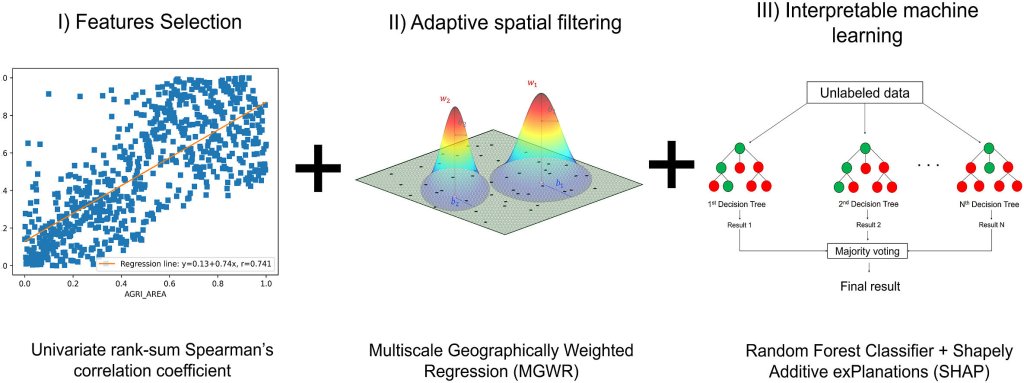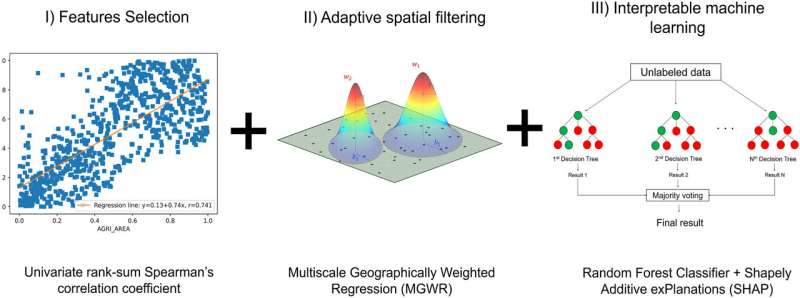
Study: Impact of agricultural activities on PM2.5 in Lombardy is comparable to that of urbanization, industry (Image Credit: Phys.org)

A research study from Politecnico di Milano in the journal Chemosphere has quantified the impact of agricultural activities on the spatial distribution of fine dust (PM 2.5) in Lombardy, showing that it is comparable to the impact of other well-known sources of pollution, such as urbanization, industry, and transportation.
Such comparable impact was found not only in the rural areas but also when considering more densely populated areas.
In particular, agriculture’s contribution resulted correlated more to pollution spikes rather than to a baseline increase, but with a limited duration over time. Among the analyzed crops, while rice fields showed a minimal impact, corn and cereals fields showed a significant contribution to pollution.
These results have been obtained using an innovative framework and a data-driven model that includes the evaluation of the impact of the different land use on the spatial distribution of PM2.5 concentration, particularly suited for the analysis of agricultural land, with a higher precision compared to pre-existing models.
To this aim, both Earth observation data by satellites and atmospheric models of the Copernicus program were utilized to derive the PM2.5 concentration, while information on the land use was obtained from the open access database and the agricultural information system of the Lombardy Region.
For the analysis, an innovative GEOAI (Geomatics and Earth Observation Artificial Intelligence) system composed by a three-steps architecture, that allows researchers to measure and interpret spatial dynamics on a local scale and to compare effects of different land use on pollution, was utilized. Thanks to this new approach, it will be possible to generate new evidence on the pollutant concentration due to specific agricultural activities, such as fertilization and manure spills.
This research originated by the D-DUST (Data-driven modeling of particUlate with Satellite Technology aid) project, with the aim to evaluate the potential—in terms of operability, cost-efficacy ratio, and accuracy—of a systematic integration of non-conventional data into the traditional PM2.5 monitoring approaches based on ground stations, with a focus on satellite data and agriculture-related pollutants emission.
The project was conducted by Professor Maria Brovelli and Dr. Daniele Oxoli, from the Department of Civil and Environmental Engineering in collaboration with Professor Enrico Caiani and Dr. Lorenzo Gianquintieri, from the Department of Electronics, Information and Biomedical Engineering at Politecnico di Milano, with Dr. Santoni from Fondazione Politecnico di Milano and with professor Andrea Spinazzè from Università degli Studi dell’Insubria.
More information:
Lorenzo Gianquintieri et al, Implementation of a GEOAI model to assess the impact of agricultural land on the spatial distribution of PM2.5 concentration, Chemosphere (2024). DOI: 10.1016/j.chemosphere.2024.141438
Provided by
Polytechnic University of Milan
Study: Impact of agricultural activities on PM2.5 in Lombardy is comparable to that of urbanization, industry (2024, March 4)
retrieved 5 March 2024
from https://phys.org/news/2024-03-impact-agricultural-pm25-lombardy-urbanization.html
part may be reproduced without the written permission. The content is provided for information purposes only.





